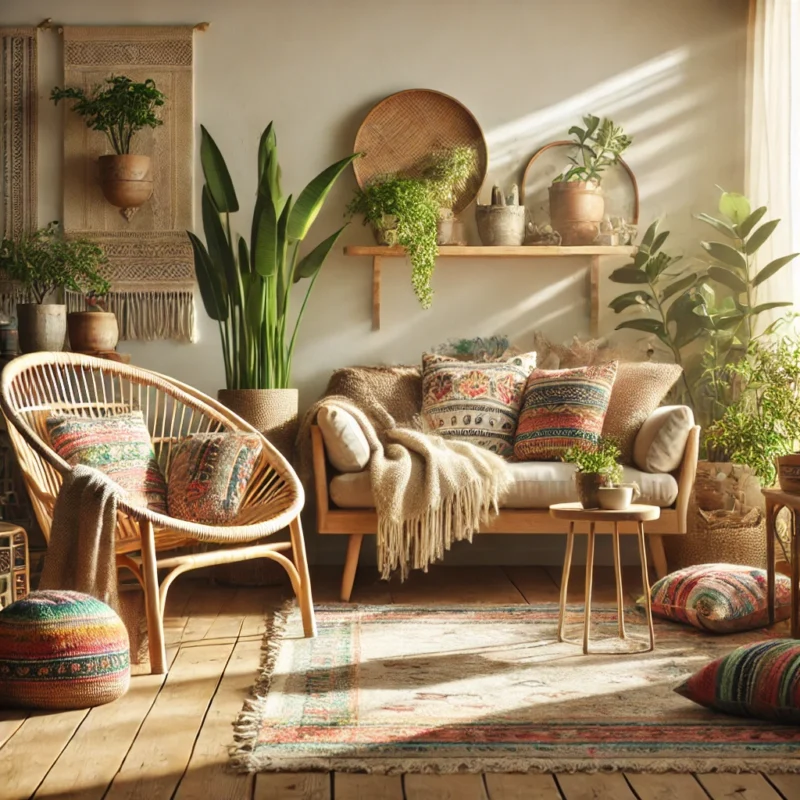Creativity and DIY, Gifts and Celebrations, Home Comfort and Decor
Boho Style: Timeless Elegance Hidden in Details
The Origins of Boho Style
Historically, the bohemian lifestyle emerged in France after the French Revolution, when many artists found themselves impoverished. They adopted a nomadic lifestyle, influenced by Eastern European gypsy culture, which was itself a mix of various ethnic traditions. The result was a fusion of eclectic styles, patterns, and colors, which later became known as the boho style.
This style evolved throughout the 20th century, particularly during the 1960s and 70s, when the hippie movement embraced boho’s nonconformist aesthetics. Today, boho interior design continues to thrive, offering a space for individuals to mix modern influences with vintage charm, creating rooms that tell a personal story.
Core Elements of Boho Style
At the heart of boho interior design is a sense of warmth, comfort, and individuality. The style encourages creativity and embraces the imperfections that give a room character. Here are some key elements of boho interiors:
Natural Materials
Wood, rattan, bamboo, and other natural materials are central to boho design. These materials bring an organic, grounded feel to a space, making it warm and welcoming. Think of hand-carved wooden tables, rattan chairs, and wicker baskets that add texture and depth to the room.
Rich Textiles
One of the most beloved aspects of boho style is the use of rich, colorful textiles. From embroidered pillows to woven blankets and Persian rugs, textiles play a crucial role in layering colors and patterns. Mixing various fabrics, such as velvet, linen, and cotton, adds a sense of luxury and coziness to the space.
Eclectic Décor
Boho style is about mixing and matching different cultural influences, time periods, and aesthetics. Vintage furniture can be paired with contemporary artwork, while tribal-inspired wall hangings might sit alongside industrial lamps. This creates an eclectic but harmonious space.
Plants and Greenery
No boho space is complete without an abundance of plants. Greenery brings life and energy into the room, with lush, overflowing plants such as monstera, philodendrons, or ferns softening the hard lines of furniture and bringing a sense of peace to the space.
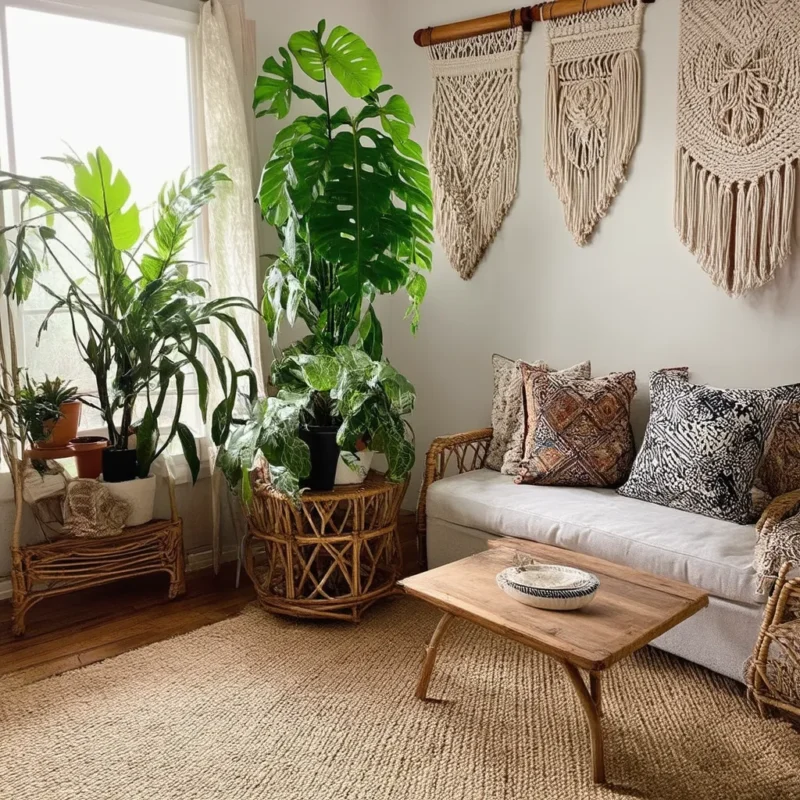
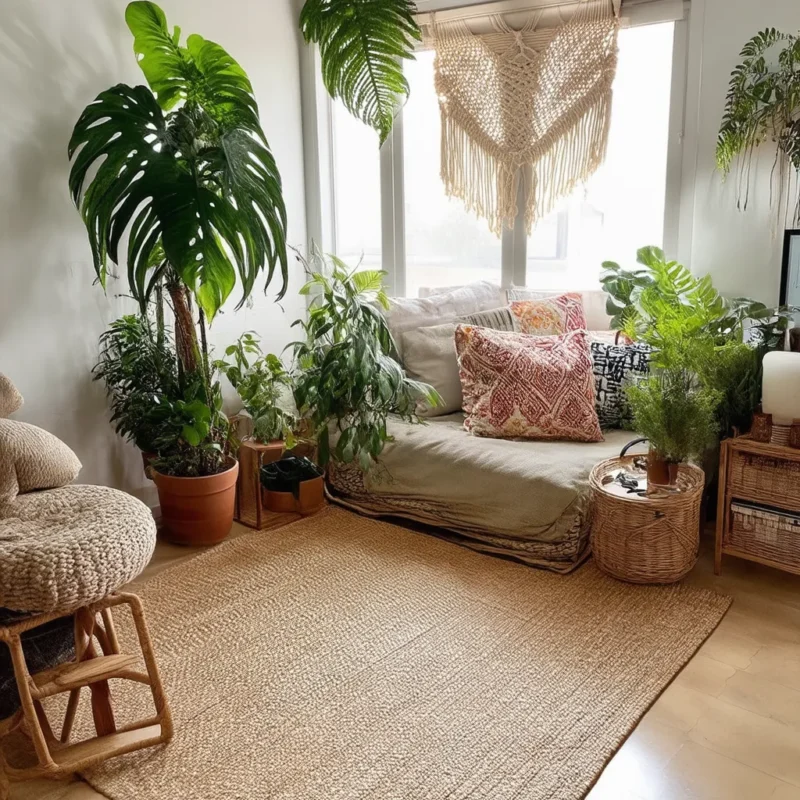
Challenges and Opportunities
Creating a boho-inspired space can be both exciting and challenging. The main challenge lies in achieving a balance between eclecticism and cohesion. With so many textures, colors, and influences in play, the space can quickly become overwhelming if not carefully curated.
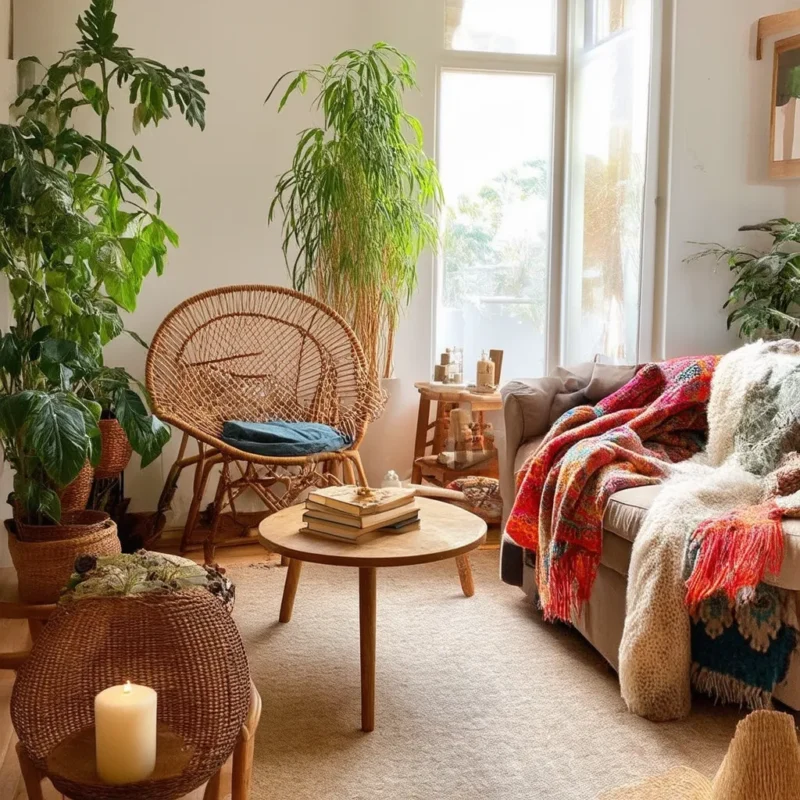
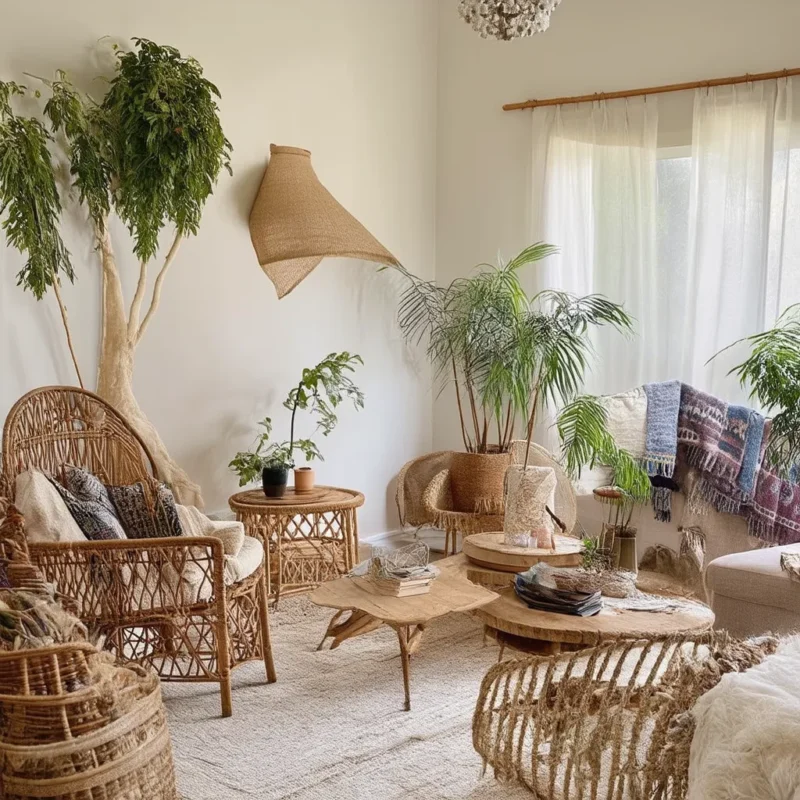
However, the opportunity that boho style offers is the freedom to break away from rigid design rules. It invites you to embrace your creativity, experiment with different elements, and create a space that is deeply personal and reflective of your journey.
Case Study: Transforming a Small Apartment with Boho Style
Let’s consider a real-life example: a small, one-bedroom apartment in a bustling city. The owners, both artists, wanted their home to reflect their creative personalities and love for nature. By incorporating boho elements—such as a reclaimed wood coffee table, hanging plants, vintage armchairs, and a bold patterned rug—they transformed their compact living room into a cozy retreat full of character and warmth. The use of mirrors and soft lighting further enhanced the space, making it feel open and inviting despite its size.
Future Trends in Boho Design
As the world becomes more focused on sustainability and conscious consumption, boho design is likely to embrace more eco-friendly practices. The use of upcycled furniture, ethically sourced textiles, and sustainable materials is already on the rise. In the future, we may see a stronger emphasis on “green” boho, where eco-conscious choices become a hallmark of the style.
The boho style remains one of the most adaptable and enduring trends in interior design. Its roots in cultural diversity, artistic expression, and a love for natural beauty make it a timeless choice for those seeking a home that feels both comfortable and unique. As the world continues to evolve, boho design will likely continue to inspire with its emphasis on creativity, individuality, and sustainability.


